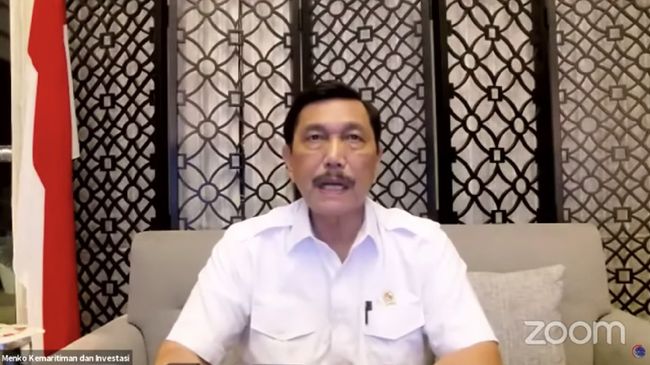Jakarta, CNBC Indonesia- Coordinating Minister for Maritime Affairs and Investment Luhut Binsar Pandjaitan complained about a number of obstacles in the development of digitalization in the country. He did not hesitate, he also mentioned that one of the obstacles is the high cost of internet in Indonesia.
In fact, he continued, considering the ongoing Covid-19 pandemic, this condition brought about all changes, including the era of digitalization which will continue to develop. To support the development of digitalization, according to him, the government and a number of stakeholders must help each other to overcome the digital divide in the country.
“This is what we must pay attention to, not only the government, but also encouragement from associations, the government will also continue to push to overcome the digital divide that occurs,” he said at the Indonesia Fintech Summit 2021, Sunday (12/12/2021).
Not only the high cost of internet, he also explained a number of other obstacles in implementing digitalization in the country, such as access to telecommunications services that have not reached all villages in Indonesia and the network speed is still low.
“Access to telecommunications services still does not reach all villages in Indonesia. In addition, the low level of network speed is also an obstacle in growing the digital economy. Not to mention the internet gap also occurs because the high cost allows the internet to only be accessed by those who are economically capable,” he explained. Luhut.
Reflecting on current conditions, of course, the issue of socio-economic disparities in Indonesia is becoming more complex in line with increasingly intensive digitalization in the pandemic era. If this is not managed properly, then according to him, this can certainly be a “time bomb”, considering that there are no signs that the Covid-19 pandemic will quickly disappear.
Previously, the World Bank (World Bank) also mentioned that the digital gap in internet access in Indonesia is still very wide, as evidenced by 49% of the adult population in Indonesia still not having internet access.
“There may be some people who cannot participate in this digital technology and they can be left behind. Almost half of the adult population in Indonesia cannot access the internet. And that means they cannot take advantage of the fruits of this digital technology,” said Satu Kahkonen, Director of the World Bank. for Indonesia.
Indonesians who are in the highest 10 percent income distribution group are five times more likely to get connectivity than those in the lowest 10 percent income distribution group.
(wia)
– .


